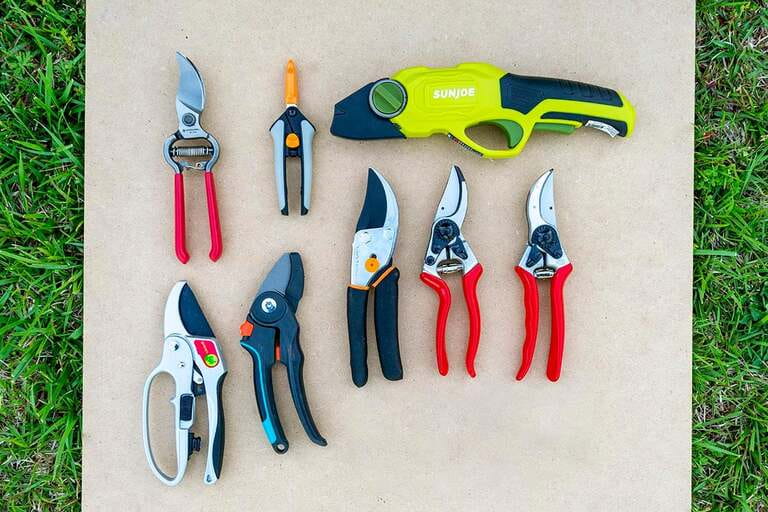In the enchanting realm of gardening, the art of cultivation extends beyond just planting seeds. To shape and nurture your green haven, you need the right tools, and pruners are among the most essential. Pruners are the secret behind achieving healthy and vibrant plants, ensuring they grow beautifully and flourish. Whether you're a seasoned gardener or a beginner taking your first steps into the world of horticulture, mastering the art of using pruners is a skill that will elevate your gardening experience. Join me as we embark on a comprehensive journey to understand the nuances of using pruners, uncovering the techniques and insights that will help you achieve the garden of your dreams.
How To Use Pruners
1. Understanding the Types of Pruners
Before you dive into using pruners, it's essential to familiarize yourself with the various types available:
Anvil Pruners: These pruners have a single sharp blade that closes against a flat surface, similar to a knife against a cutting board. They're ideal for cutting thicker branches and stems.
Bypass Pruners: Bypass pruners feature two curved blades that work like scissors, creating a clean and precise cut. They're perfect for delicate or live growth.
Ratchet Pruners: Ratchet pruners utilize a ratcheting mechanism that allows you to cut through thicker branches in stages, requiring less force.
Each type of pruner has its own strengths and purposes. Consider the specific needs of your plants and the tasks you'll be performing to choose the right type of pruner for the job.

2. Choosing the Right Time for Pruning
Timing is crucial when it comes to pruning. Pruning at the right time ensures optimal plant health and encourages proper growth. Generally, the best times to prune are:
Late Winter or Early Spring: This is the ideal time for pruning deciduous trees and shrubs before new growth begins.
After Flowering: For plants that bloom in spring, such as lilacs, prune immediately after they finish flowering to avoid cutting off next year's buds.
Late Summer: Prune summer-flowering shrubs once they finish blooming to shape and encourage new growth.
Each type of plant may have different requirements when it comes to pruning timing. Research the specific needs of your plants to ensure you're pruning at the most advantageous time.
3. Mastering Pruning Techniques
Pruning isn't just about cutting randomly; it involves precision and skill to achieve the desired results. Here are some essential pruning techniques to master:
Deadheading: Remove spent flowers to encourage new blooms and prevent the plant from expending energy on seed production.
Thinning: Thin out overcrowded growth to improve air circulation and sunlight penetration, reducing the risk of disease.
Heading Back: Trim back long or leggy stems to promote branching and denser growth.
Crown Thinning: In trees, remove select branches to reduce density and allow light to filter through the canopy.
Different plants and shrubs may require different pruning techniques to thrive. Study the specific needs of each type of plant to ensure you're pruning correctly.

4. Using Pruners Safely
Safety should always be a priority when using pruners. Follow these safety guidelines to protect yourself and your plants:
Wear Gloves: Gardening gloves provide protection from thorns, splinters, and other potential hazards.
Eye Protection: Safety goggles shield your eyes from debris and sharp branches.
Prune at the Right Angle: Make cuts at a 45-degree angle just above a healthy bud or node to encourage new growth.
Keep Your Tools Clean: Disinfect pruners between cuts, especially when dealing with diseased plants, to prevent the spread of pathogens.
Proper safety measures not only protect you but also ensure that your plants remain healthy and free from potential diseases.

5. Caring for Your Pruners
Proper maintenance ensures your pruners remain effective and last for years. After each use:
Clean Your Pruners: Remove debris and sap with a damp cloth. Use a wire brush to remove tough residue.
Oil the Blades: Apply a light coat of oil to prevent rust and keep the blades moving smoothly.
Sharpen Regularly: Keep the blades sharp to ensure clean cuts. Use a sharpening stone or file.
Regular maintenance not only extends the life of your pruners but also ensures that your cuts are clean and precise, promoting healthy plant growth.

Conclusion
As we've explored the world of using pruners, it's evident that these humble tools are indispensable allies in your gardening journey. From selecting the right pruners for the job to mastering pruning techniques and ensuring safety, the art of using pruners is a skill that will elevate your gardening endeavors.
With each precise cut, you'll be sculpting not just the plants, but also the future of your garden. Whether you're rejuvenating overgrown branches, encouraging vibrant blooms, or shaping the overall landscape, the careful and skilled use of pruners is a testament to your dedication as a gardener.
So, equip yourself with the right pruners, understand the techniques, and immerse yourself in the therapeutic world of pruning. As you watch your garden thrive and flourish under your skilled hands, you'll realize that using pruners is more than a task – it's a dance of precision, care, and the art of nurturing nature's beauty.













